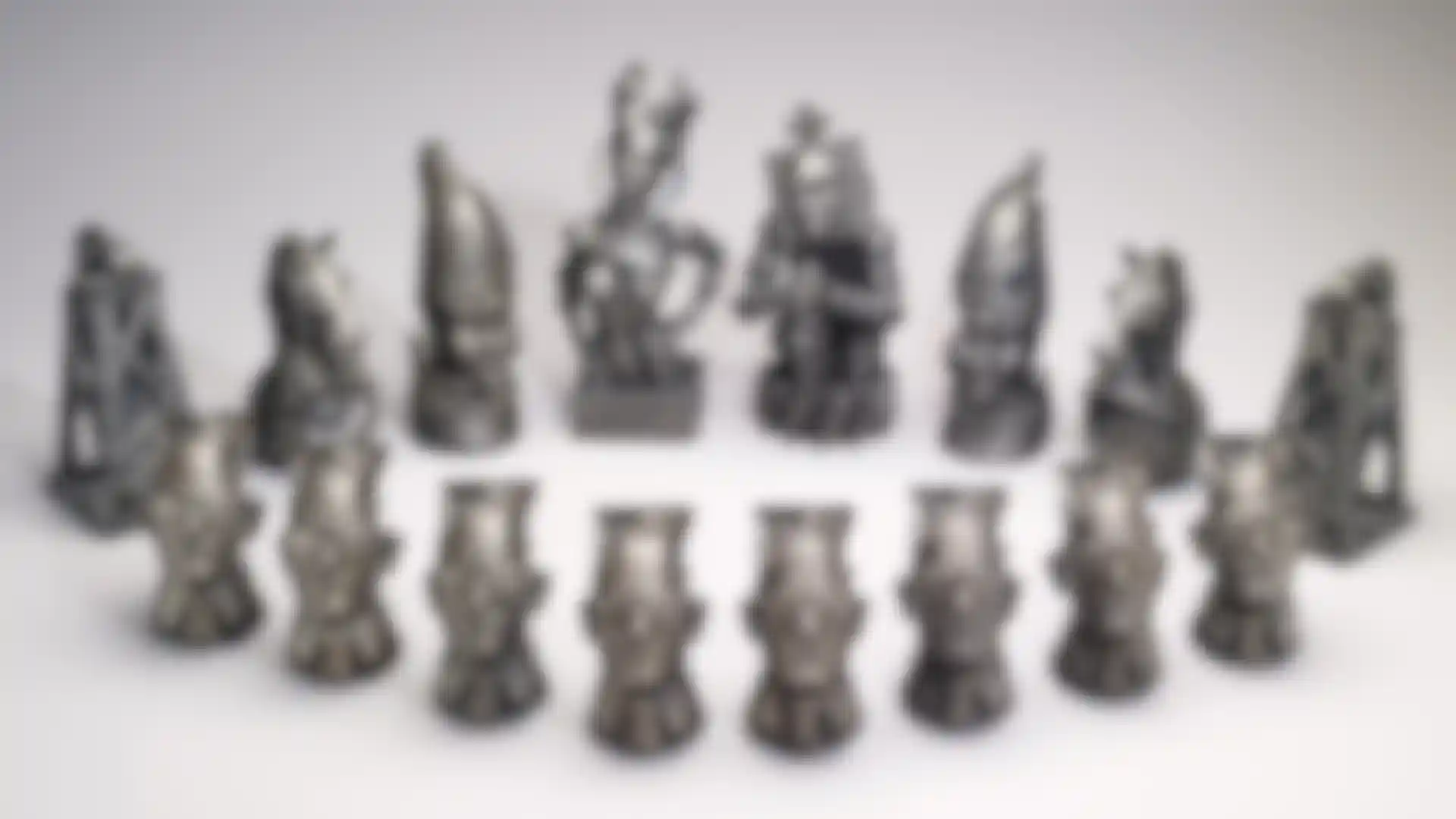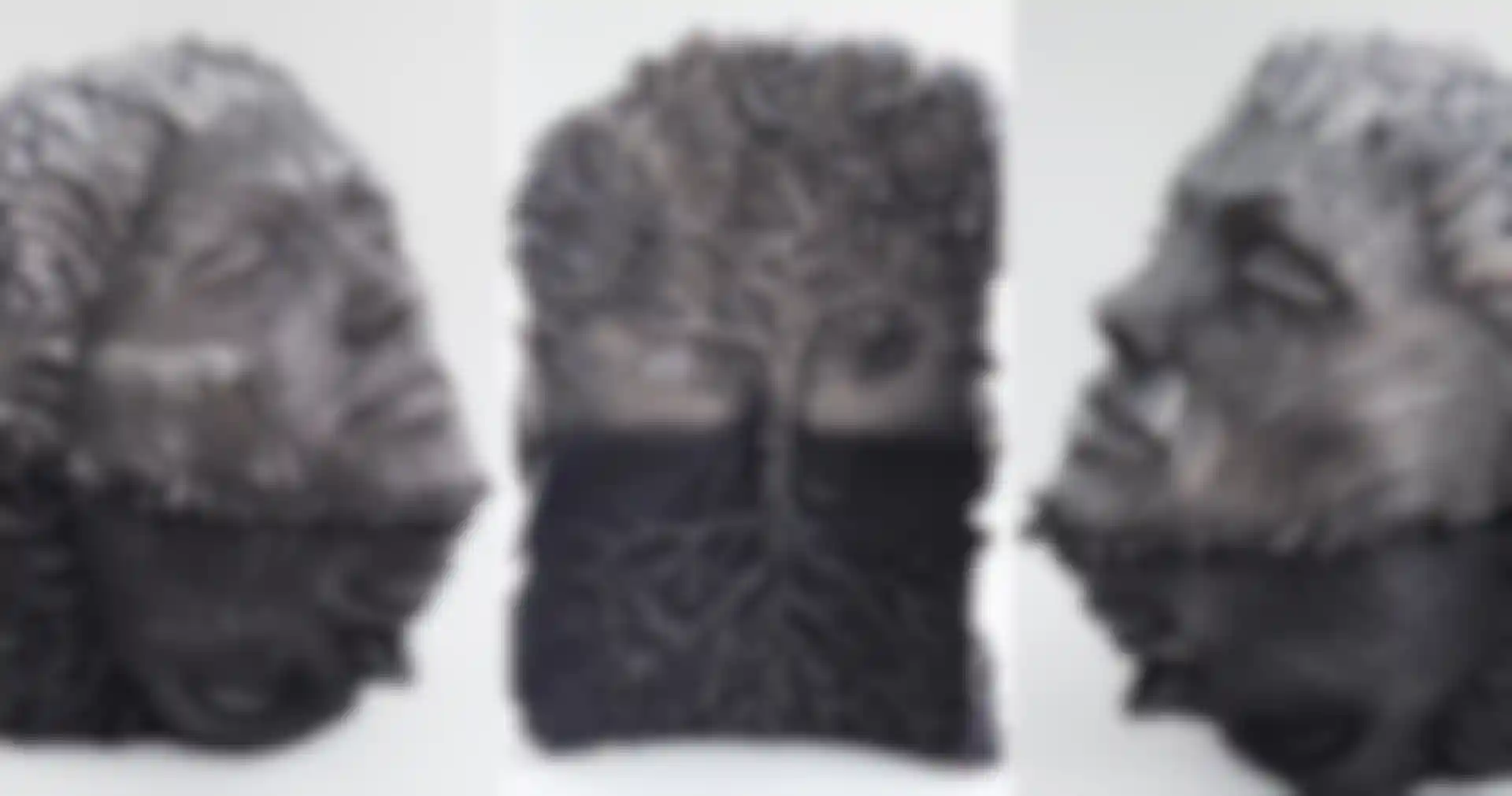
Grabbing hold of the ribbon In this interview, artist Gil Bruvel looks back on his many years of experience and talks about his recent artwork with ZBrush.
Recently, we had an opportunity to get up close and personal with artist Gil Bruvel. For over 4 decades, Gil has worked tirelessly to push the envelope in a wide variety of mediums. His latest works see him conquering the realms of digital sculpting and 3D printing using ZBrush. We are delighted to present this intimate look at a man who continues to expand his artistic voice.

For the uninitiated, you have been actively creating artwork for over 40 years. A great deal of social change has occurred in that time. What inspires your work?
My view of creativity is to keep developing strategies to keep the inspiration flowing. Within this process I will always remember Dali's words from "50 Secrets of Craftsmanship." In one of his secrets, he said “Don't throw to the dogs either your eye or your hand or your brain, for you will need them all if you are to be a painter." When I was a young artist, it was all about the impulse, instincts, the single-minded vision to create something mostly from feelings and images popping into my mind. The inspiration is in the constant discovery of the infinite layers of my surroundings. This extends to include everything from the structure of a blade of grass, to the depths of our universe. If there is an intention to understand and completely open oneself up to what is being observed, then patterns start to define themselves and intuitively assemble into interesting pieces of artwork. The richness of these observations is one aspect of inspiration.

When do you decide whether or not you will pursue a piece as a sculpture versus painting or drawing?
This is about seizing the ephemeral moment that flashes through my mind and paying attention to it—a feeling, a sensation, an image. But there are also other factors that come into play, such as the tools being used. As an artist, and as I develop an acquaintance with my day-to-day practices, I develop an affinity with certain tools that will stimulate this very creativity. I have observed this phenomenon throughout my life and of course when I started to work with 3D software. There is a flow of ideas that started to emerge on their own as these tools were being mastered. Interestingly enough, it also changes the way I observe things.

How do you decide on the context or subject matter for a particular collection or piece?
One of my recent endeavors is the Flow Series. This is a series of sculptures attempting to evoke movements, fluidity and patterns inspired by nature—in particular, the movement of elements such as wind or water—and combined with physical sensations. The ephemeral moment is also a big part of it. In other words, this perpetual motion changes instantaneously and continuously into something else, and what we see at any one moment is just a fragment, a fraction, as if frozen in time. This concept had been percolating in my mind for a while until I felt ready to experiment. The parameters I arbitrarily set were: keep it simple in its expression, avoiding distracting elements and aiming at a sensation of fullness; keep it focused to the main goal of expressing movement, fluidity, sensations and streams of energy. I felt stainless steel was a great metal for this series. It would keep a certain amount of reflectivity that can be modulated by different levels of polishing, which relates to the sense of immersion and connection within an environment.
When does a single piece morph into an entire collection?
Well, with the theme of the Flow Series, the iterations can be endless since the idea of freezing a moment in time and evoking the ephemeral can involve any moment that inspires and echoes with a sense of wonder about the world.



Who are some of the artists that inspired you as a young artist? What artists do you find pleasing today?
I liked the surrealists, including Dali, Max Ernst, Giorgio de Chirico, a visionary artist like Ernst Fuchs and Antoni Gaudi, the Spanish architect. What interested me about Gaudi was how he was interpreting natural shapes in his architectural forms. Also, Francis Bacon and Roberto Matta have been influential over the years. The surrealists were about tapping into the unconscious. Now my fascination goes more to architects like Lebbeus Woods, Zaha Hadid and Frank Gehry, just to name a few.
Your training is classically driven. In what ways does this inform or influence your esthetic decisions?

Well, I trained in a restoration workshop learning how to restore old masters and contemporary masters. It helped me understand how important it is to use the right tools to create specific things, and the multiplicity of ways these tools can be combined and used. As our visual and intellectual understanding evolves and the scope and sources of inspiration expand, we develop more sophisticated tools to express deeper layers of how we assimilate this new knowledge and our intuitions about the world. I think artists of most periods in art history have always thrived to forge new tools and methods to express themselves, and these new tools and methods, in turn, have influenced the evolution of styles. Whether for ideological reasons, such as breaking away from artistic dogmas or for implementing new ways of looking at the world, the changes were a natural course of action. With the digital age, the process has expanded at an incredible speed and these new tools influence our stylistic decisions.
Would you describe yourself as a surrealist?
It is easier to say yes in general and avoid the question, but I’d have to say not really. At the very beginning of my career, yes, surrealism was a big influence and I emulated it. As I developed my own style and sources of inspiration, I felt it was limiting to be boxed up into an "ism." Tapping the subconscious just became another part of the process and I became increasingly fascinated with the creative process itself as well as with growth processes in nature, the architecture of plants, molecular structures, new knowledge about human perceptions and a million other things that made me feel it was pretty restricting to fall into surrealism only. Plus I saw it as something from the past, as our understanding of the human psyche and brain is continuously evolving with science. I also naturally stayed away from art movements or trends and saw being an artist as a quest for personal growth.
You recently showed a series of work at the 3D Printer World Expo. The pieces on display were the result of amazing artwork and advanced printing technology working in harmony. What are your sentiments on the future of sculpture in the digital age?
One day we will have 3D modeling software with which we will be able to interact using our brain waves, muscles impulses, and eye movements. We’ll have the capacity to model with billions of polygons or voxels or completely new math impossible to predict, at the speed of our thinking. This will take the process of creation to unpredictable new levels. One of my initial inspirations about the digital medium as a means of visualization took place in France in the late 1980s. A TV program was showing how fractal math developed by Benoit Mandelbrot could model the dynamic of a cloud in motion. I thought it was breathtaking to be able to do that and I immediately realized the potential. I think artists from any time period, past or present, would have done the same—and they have done the same kind of thing with whatever new technologies came up during their time. I think it is a natural human activity to evolve our creative capacity along with new paradigms which were unimaginable before new technologies appeared. It also completely changes our perceptions of the world and definitely expands our spatial perceptions and understanding of the world. So, I fully embrace any new technologies that will help to continue this quest.

Do you see yourself transitioning toward more digital composition as technology advances?
I think technologies used for art expression, old or new, are like cultures from different countries. It takes a full immersion in each of the cultures to experience them and to be able to discern the best elements of each and let go of the obsolete ones and combine the best ones together. So for me it is not so much of a transition but a constant process of finding new ways to put different elements together, keeping what is good from the past along with the new. I also feel that having studied and explored the past centuries of art creation though my training in restoration has helped me welcome and experiment with the best new tools that technology has to offer as it grows. Sometimes it is just as easy and immediate to use a regular pencil to sketch an idea, and sometimes the idea needs the use of 3D tools in order to emerge.

What are the benefits of working with digital modeling tools like ZBrush compared to traditional methods?
Speed and multiple iterations of an idea, quickly reshaping a sculpture and keeping some elements of the older iterations without having to redo them; transforming an idea in unpredictable ways and easily exploiting the "accidents" and having access to an extremely vast group of creative and highly trained, talented people using the same tools, from whom to get feedback. Also, minimal cost in the process since redoing a maquette multiple times with traditional tools can be costly. These tools have changed our thought processes and resulted in a new paradigm for creativity. Technology is used in so many different fields, in so many different ways that an infinite number of events or phenomena can now be modeled without needing to stay within stylistic, intellectual or creative boundaries. Sources of inspiration can come from the most unexpected fields and can be cross-combined in limitless ways.

How did you start using ZBrush?
I started to use ZBrush at the very beginning when I saw it at Siggraph. That was a long time ago. 14 or 15 years ago? Not quite sure but it caught my attention and I started to play with it, and then I watched it grow and grow and grow some more over the years into this amazing software. I feel fortunate to have witnessed this growth and evolution and be able to use it as one of my creative tools.
If you were starting out today, what would you do differently?
Taking different paths doesn't necessarily mean arriving at a different destination. So far it’s been a fantastic journey and I would gladly start all over again, experimenting with new paths but probably with the same goals.

What advice would you impart on younger artists hoping to follow in your footsteps?
Believe in yourself, follow your vision, cultivate your mind and practice as much as you can. Be clever about how you spend your time—it takes a lot of effort to grow talent.
Please join us in thanking Gil Bruvel for his time and energy put into this interview! To learn even more about him, check out his website.